
IRIS login | Reed College home Volume 96, No. 2: June 2017
Alumni Raise a Glass For Reed (and Dionysus)
Like a cluster of grapes, alumni of all vintages gathered last week to drink wine, celebrate Reed vintners, and raise money for Reed.
More than 70 alumni converged on the second annual Reedies Drink Reedie Wine for Reed event, where they enjoyed a profusion of reds, whites, and rosé from seven Reed winemakers:
The real highlight of the evening may have been a presentation by recent grad Nicolette Sutherland ʼ17 on her thesis, Cross-modal Perceptual Learning: A Novel Shape-Tasting Method for Sensory Discrimination of Wine.
Held in a chic Ducati dealership in Portland, this year’s event was hosted by Alumni Fundraising for Reed and the Portland Alumni Chapter and and raised $2,513 for Reed.
Organizer Dylan Rivera ʼ95 launched the event after his class coordinated a wine tasting at its 20th Reed reunion. He thought this should happen more often, but with a philanthropic component. “Reed was such a life-changing experience for me, I see it as my duty to give back as much as I can,” Dylan says. “I benefitted from financial aid, and by giving to the Annual Fund every year, I help give a new generation access to the education that has enriched my whole life.”
Special thanks to the following alumni, who helped make this event happen: Stephany Watson ’82, Dylan Rivera ’95, Andrew Schpak ’01, Katherine Woods-Morse ’01, and Caroll Casbeer ’10.
Continue reading Alumni Raise a Glass For Reed (and Dionysus)
Math Profs Win Grant to Stretch a World of Silly Putty
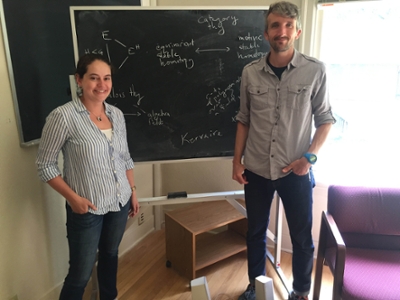
Imagine an elastic, rubbery world where baseballs can be stretched into spaghetti, and coffee cups squeezed into wedding rings. Where our familiar intuitions about shapes, points, and proximity are given rigorous mathematical definitions—and then turned inside out, distorted into an alien universe of dazzling symmetries and dark infinities.
Welcome to homotopy theory, a peculiar domain where mathematicians use the relatively well-established tools of algebra to peek inside the fantastic terrain of topology.
Reed math professors Kyle Ormsby and Angélica Osorno have won a monster $368,000 grant from the National Science Foundation to explore this emergent field (pronounced HOME-uh-topy), which is populated by strange mathematical entities such as Hopf fibrations, Burnside rings, and infinite loop space machines.
Continue reading Math Profs Win Grant to Stretch a World of Silly Putty
Poetry Prize Goes to Environmental Studies Major
Tiffany Thio ’19 has won the 2017 Mary Barnard Poetry Prize Contest for her poem, “quintessential hard heart.”
Tiffany is a environmental studies–biology major. Her busy course schedule has meant she hasn’t had an opportunity to take creative writing workshops at Reed—yet. “I’ve been writing poetry, stories, and songs since I was a kid, and I wanted to be a novelist when I grew up until I discovered that science is something I really love and want to pursue,” she says. As a kid she moved around between Asia and America and spent her high school years at an international school in Shanghai.
A science and outdoor enthusiast, Tiffany’s poetry takes inspiration from the natural world. She wrote“quintessential hard heart” during a trip for Reed’s outdoor program as she was riding back from skiing in the Santiam Pass. On the road to Sisters she passed by the Detroit Dam on the Santiam River, the same river where she had paddled her first class III rapid in a kayak and taught kayaking camps. “It was kind of bizarre to see flat water and a huge concrete wall in a river that’s flipped my boat so many times! Thinking about the numerous ways in which dams affect riparian habitats and surrounding watersheds is fascinating and quite saddening. Water has always thrilled me, and I love to raft, swim, surf, and kayak—it makes its way into a lot of my writing.” She drew on this and some personal family struggles to craft her winning poem.
Continue reading Poetry Prize Goes to Environmental Studies Major
Reed Grad Slain Defending Teenagers from Hate
Reed graduate Taliesin Myrddin Namkai-Meche ’16 was one of the two people fatally stabbed while protecting the safety of others on the Portland, Oregon MAX train on Friday, May 26, 2017.
According to police reports, Taliesin was attacked while trying to intervene during an incident characterized by witnesses as an anti-Muslim and racist tirade.
President John R Kroger described the loss as "shocking and horrific."
Taliesin majored in Economics at Reed. We have heard from many community members this morning who are sharing their grief and memories of this beloved young man. Prof. Kambiz GhaneaBassiri [religion] described Taliesin as an extraordinary person. “I still remember where he sat in conference and the types of probing, intelligent questions I could anticipate him asking. He was thoughtful, humble, smart, inquisitive, and compassionate. He was a wonderful human being. As good as they come. And now he is a hero to me."
Prof. Noelwah Netusil [economics] was Taliesin’s thesis advisor, and describes him as “a very caring person, smart, hardworking, and with such a bright future.” Other remembrances by friends were published in the Oregonian on Sunday.
Portland Mayor Ted Wheeler issued a statement hailing Taliesin and the other bystanders as heroes. "Two men lost their lives and another was injured for doing the right thing, standing up for people they didn't know against hatred. Their actions were brave and selfless, and should serve as an example an inspiration to us all. They are heroes."
Continue reading Reed Grad Slain Defending Teenagers from Hate
Reedies Rack up NSF Grad Research Awards
Ten Reed students and alumni have won National Science Foundation (NSF) Graduate Research Fellowship Program awards or honorable mentions this year, for projects ranging from cultural anthropology to theoretical physics.
The NSF Graduate Research Fellowship Program is the oldest fellowship program in the country that offers direct support to graduate students in STEM fields, and works to help “ensure the vitality of the human resource base of science and engineering in the United States and reinforces its diversity,” according to its mission statement. Receiving a Graduate Research Fellowship has been the beginning of many brilliant successful careers: 42 fellows have gone on to receive Nobel Prizes, and more than 450 have gone on to become members of the National Academy of Sciences.
The fellowship is often a springboard directly into successful completion of a PhD program, with more than 70% of awardees completing their doctorates in 11 years. NSF Graduate Fellowships, then, are a natural path for many Reed students, as Reed is the third-highest producer of PhDs in the life and social sciences in the nation.
Continue reading Reedies Rack up NSF Grad Research Awards
Seven Excuses for Not Attending Reunions and Seven Reasons Why You Should
Before ambivalently attending my first class reunion in 1983, I put together the following list of excuses not to show up. Maybe you’ve used some of the same ones to avoid coming back as well. Consider the counter arguments I came up with, and then consider joining us this year. I’ve had a blast at every reunion I’ve attended, and I think you will, too.
1. No one will remember me. Even if you didn’t hang with the folk dancers, the druggies, the politicos, or the all-in-black clique, someone is likely to remember you, no matter how solitary you were. But even if that someone is not among this year’s attendees, we’re a friendly group. You’re sure to meet someone who will like the you that you have become.
2. My life at Reed was too painful. Painful is waiting expectantly at the dorm window, unwilling to go to dinner until a certain person, who didn’t know I existed, entered commons. Painful is taking three final exams with an undiagnosed burst eardrum. Painful is sitting at home alone after class with a black cat on my lap, tears streaming unbidden down my face. That bout of clinical depression lifted only after I volunteered as a dance therapist with schizophrenic kids at the Perry Center. If I can survive all that, and then have fun at a class reunion, I suspect you probably can too.
Physics Major Traps Chaos in a Jar
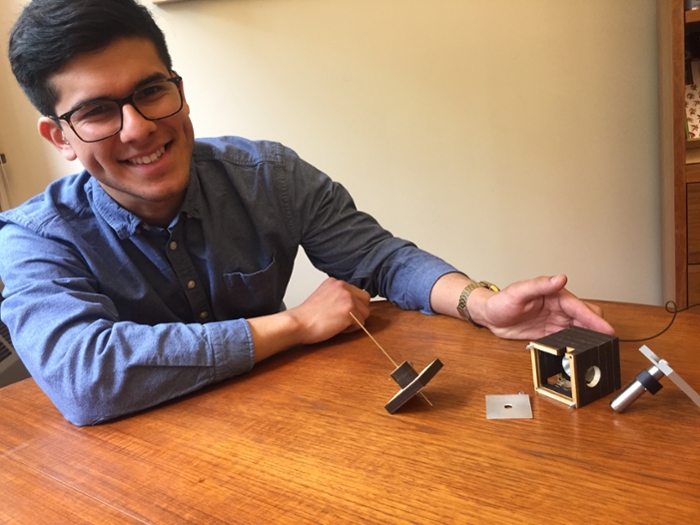
Hovering between two electrically charged spheres, the microscopic ball zigs and zags with giddy abandon, dashing hither and yon in seemingly random motion. To physics major Edgar Perez ’17, however, this intricate dance represents something beautiful—chaos, captured in a jar.
The jar is actually a monopole ion trap, and he is the first researcher to show that it can generate chaotic behavior, which he demonstrated in a series of experiments for his senior thesis.
”I’m very, very happy,” says Edgar, who won the Class of ’21 Award, recognizing “creative work of notable character, involving an unusual degree of initiative and spontaneity,” for the project.
Continue reading Physics Major Traps Chaos in a Jar
Reed Biologist Lands $429,000 NIH Grant to Study Zebrafish Eye
The National Institute of Health awarded $429,000 to Assistant Professor of Biology Kara L. Cerveny [2012-] to advance her research on cell behavior inside the eye of the zebrafish. Prof. Cerveny’s research will focus on understanding the specific mechanisms employed within the retina that govern growth, tissue size, and composition.
“I’m fascinated by the development of the nervous system,” said Professor Cerveny. “One of the things I hope to discover is how at precise times and in specific locations, seemingly identical embryonic cells are encouraged to generate all the different types of neurons required for us to perceive our surroundings.”
Cerveny aims to uncover how specific signals, naturally occurring within and around the developing eye, impact proliferation and differentiation of embryonic cells. By studying these events in the zebrafish eye, she hopes to provide insight into exactly how the human eye regulates analogous cells.
Continue reading Reed Biologist Lands $429,000 NIH Grant to Study Zebrafish Eye
Reedies Nab Fulbrights
Four Reedies have been selected as Fulbright recipients for the upcoming year:
Zain Alattar ’14, as a Masters student in the Arabic and Islamic World programme at Sorbonne University in Paris, France;
Nicole Cohen ’16, as an English Teaching Assistant in Galicia, Spain;
Ben Hemenway '16 as an English Teaching Assistant in Germany; and
Hayden Bunker ’17, as an English Teaching Assistant in a public school in Taiwan.
Continue reading Reedies Nab Fulbrights
Eight Students Win Presidential Summer Fellowships
Eight students recently received a President’s Summer Fellowship and will undertake a variety of unique and exciting projects this summer. The award, which was established by a generous gift from trustee Dan Greenberg ’62 and Susan Steinhauser and inaugurated by President John R. Kroger in 2012, gives selected students $5,000 for an 8-10 week summer project that combines intellectual pursuit, imagination, adventure, personal transformation, and service to the greater good. Here, in the winners’ own words, are the projects that will be underway during the summer of 2017.
Continue reading Eight Students Win Presidential Summer Fellowships
James Beard and Reed
This month, PBS will release a new documentary of pioneering gastronome James Beard, the celebrated titan of American cooking. The film (which premieres at the NW Film Center on May 5!) is sure to inspire new interest in Beard, a fascinating figure who attended Reed in 1920-21. Indeed, Frank Bruni wrote an insightful column last week in the New York Times about erasure, suppression, and the peculiar silence that lingered over a central fact of Beard’s life—the fact that he was gay. Bruni also made reference, in passing, to the often-repeated claim that Reed expelled Beard for being gay.
As far as I know, the story first surfaced in Robert Clark’s excellent 1993 biography, which traces Beard’s mercurial arc at Reed against a backdrop of rising homophobia in Portland in the teens and twenties. At some point, Clark writes, Beard became lovers with one or more male students and a professor, and he was subsequently booted out—”quickly, quietly, and with no formal explanation.”
I could find nothing in the archives to support this claim. We could not even find any 97-year-old coded language, euphemisms, or double entendres in Beard’s record to indicate that anyone at Reed knew or cared about his sexual orientation.
What I do know, however, is that Beard and Reed reconnected years later. In 1976, he returned to campus for commencement so that the college could present him with an honorary degree (he shared his recipe for brownies and got a standing ovation).
There can be no doubt that Beard cut an outsized figure at Reed while he was a student. He made frequent appearances in the Quest. He won a prize for a Halloween costume in full drag and was elected as the treasurer of the freshman class. He was the anchor of the freshman team in the annual tug-of-war contest. The 1921 Griffin devoted an entire four-page section to him, titled “The Jimmie Book.” He was, as Clark writes, “the celebrated wit and rococo Gargantua of the class of ’24.”
It also seems clear that Reed made a lasting impression on Beard. He maintained lifelong friendships with classmates. He came back for his 50th reunion. “He felt very good about Reed,” Portland lawyer (and trustee emeritus) Morris Galen told me in 2011, “and was thrilled when he was awarded an honorary degree."
In fact, after his death in 1985, Beard bequeathed the bulk of his estate to Reed, including his private collection of his own cookbooks, and set up the James Beard Scholarship Fund, which supports students who otherwise could not afford tuition.
There is no question that he is revered at Reed today. We are proud to recognize him as an alumnus of the college.
Continue reading James Beard and Reed
Chem major battles malaria parasite
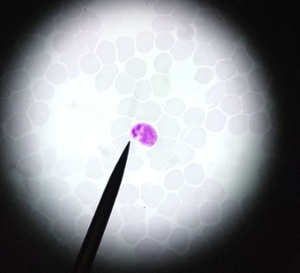
For her senior thesis, chemistry major Rose Gonoud ’17 squared off against one of humankind’s most ancient and implacable adversaries: Plasmodium falciparum, the parasite that causes malaria.
Plasmodium is a truly diabolical foe, responsible for the death of more than 400,000 people every year, according to the World Health Organization. It also has an extraordinary ability to mutate, developing resistance to many of the drugs currently used to fight it.
One technique for overcoming this resistance is to start with an old drug and fine-tune it to attack the newer strains of the parasite. Rose focused her research on decoquinate (DQ), a drug developed in the 1960s to combat bacterial infections in chickens. Last year, researchers made the surprising discovery that decoquinate is also effective against malaria, making it an attractive candidate for drug development. Unfortunately, there’s a problem. DQ is insoluble—it doesn’t dissolve in the bloodstream, making it impossible to deliver the drug to the organs where the parasite usually hangs out. Rose’s mission was to see if she could find a way to make the drug more soluble without sacrificing its malaria-killing power.
Continue reading Chem major battles malaria parasite
Bashir and Rock get creative with their latest projects
On Thursday, April 20, at 4:30 p.m. in Eliot chapel, the Reed College creative writing faculty Samiya Bashir [2012 - ] and Peter Rock [2001 - ] will read from their latest published works, Field Theories and Spells, respectively. The pair talked about their latest projects and their admiration for each other as colleagues.
Field Theories is Samiya Bashir’s third book of poetry, along with Gospel, and Where the Apple Falls. She holds a BA from the University of California, Berkeley, where she served as Poet Laureate, and an MFA from the University of Michigan, where she received two Hopwood Poetry Awards. She is the recipient of numerous grants, fellowships, residencies, prizes, and is a founding organizer of Fire & Ink, an advocacy organization and writer's festival for LGBT writers of African descent. Visit Samiya Bashir Dot Com for multimedia content about Field Theories.
Continue reading Bashir and Rock get creative with their latest projects
Sociology major wins Truman Scholarship
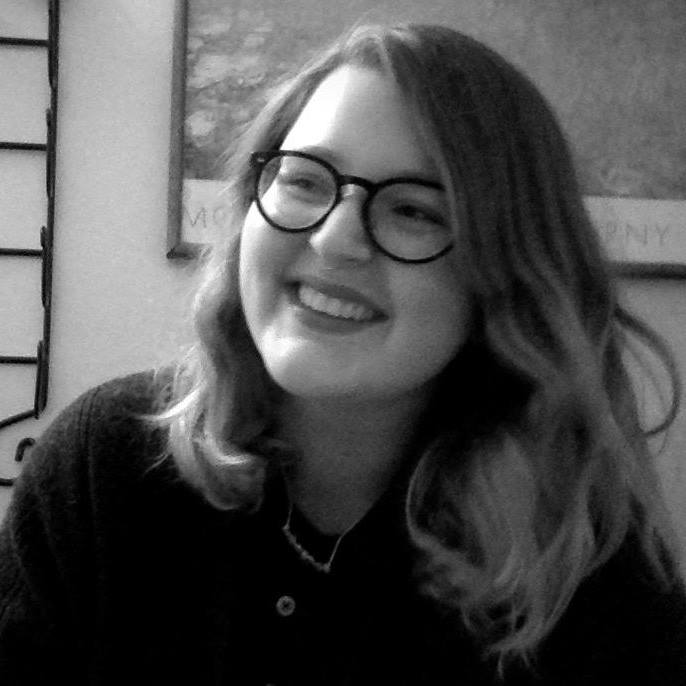
Sociology major Elea Denegre ’18 was named a national Truman Scholar today in recognition of her potential to be a “change agent” in the field of public service.
A passionate believer in restorative justice, Elea has compiled an impressive track record of service in her time at Reed. During freshman year, she became a SAPR (sexual assault prevention and response) advocate and later became the student program coordinator, managing the support hotline. She joined the Honor Council and developed a proposal to incorporate restorative justice into Title IX violations. She volunteered at the Raphael House, a local nonprofit dedicated to ending domestic violence and was a counselor at Camp Hope, a summer camp serving kids whose lives have been affected by domestic violence. She also volunteered with Reed’s SEEDS program and studied abroad in Japan.
Elea, who hails from Billings, Montana, said she was “shocked and honored” to learn she had won the prestigious award, which provides $30,000 for scholars to go to graduate school in preparation for a career in public service. “It didn’t feel real until I called my mom,” she said. “Then we both started to tear up.”
Continue reading Sociology major wins Truman Scholarship
Alumni Give “In Honor Of” Reed
Honor is making a comeback.
Last month, Reed launched the In Honor Of campaign to encourage friends of the college to honor their favorite professor, tradition, or place on campus. In the twilight hours of the campaign, momentum crested and a total of 1,226 donors gave $219,728, exceeding the donor goal that triggered an additional $50,000 match from trustee Linda Matthews ’67.
Continue reading Alumni Give “In Honor Of” Reed
Podcast: Prof. Mark Burford on Chuck Berry’s legacy
On March 17, pioneering rock 'n' roll legend Chuck Berry died at the age of 90. Berry’s hard-driving guitar riffs, car and party songs, and fluid lyrical style helped usher in a new genre of music that inspired a generation of rock bands from the Beach Boys to the Rolling Stones. Berry had hits on the Billboard charts in the ’50s, ’60s, and ’70s and performed live shows almost up to the time of his death. He was inducted into the Rock & Roll Hall of Fame in 1986.
Berry’s music tugged at a universal thread of teen culture and drew integrated audiences to his music and live performances at a time when the Supreme Court was deciding the watershed case Brown v. Board of Education that found racial segregation violated the Equal Protection Clause. I invited Associate Professor Mark Burford [music 2007–] to talk about Chuck Berry’s influence on music and culture of the 1950s.
Burford is a music historian with expertise in 19th-century Austro-German concert music and 20th-century African American popular music. His work on European art music and popular music of the Americas has appeared in the Journal of Musicology, 19th-Century Music, Current Musicology, Notes, and Musical Quarterly.
Continue reading Podcast: Prof. Mark Burford on Chuck Berry’s legacy
The Last of Reed’s Fantastic Four Passes Away
Sue Cooley, a generous benefactor who greatly enriched Reed College both academically and artistically, died on February 18. She was one of the Fantastic Four, two dynamic couples—Ed and Sue Cooley, and John and Betty Gray—who stepped in to provide leadership and direction in the 1970s when Reed was struggling, and instead of just treading water, imagined something great.
Sue was born March 31, 1923, to Waldo and Marguerite Davison in Brazil, where her father worked for the YMCA. The family moved back to the U.S. when she was six, settling in Swarthmore, Pennsylvania. Sue attended Wilson College and graduated from Swarthmore College in 1944 with a degree in psychology. That same year, she married Edward Cooley, also from Swarthmore, whom she’d known since high school. At Harvard Business School Ed met John Gray, who suggested that he come to Portland and help with his chainsaw company, Omark Industries. The Cooleys moved to Portland in 1950 where they raised three children, Susan, Douglas, and Caroline. Ed started Precision Castparts, which originally provided cast parts for Omark. It grew into a giant casting company that provided parts for the aerospace industry.
Many of Sue’s ancestors were artisans who valued working with their hands, and she developed a lifelong passion for painting as a child. As a young woman, she worked for a ceramic artist, and later volunteered at the Ceramic Studio in Portland. That active interest in the arts and painting informed her service on the board of the Portland Art Museum, and on Bainbridge Island, where she helped fund the Bainbridge Artisans Resource Network (BARN). She also supported many artists in the Northwest and Maui.
Continue reading The Last of Reed’s Fantastic Four Passes Away
Looming Debacle in Education?
We now know that the central causes of the 2008 financial meltdown were the transgressions of Wall Street. Over three decades, beginning with President Ronald Reagan, financial regulation was steadily reduced, both overtly (through changes in the laws) and covertly (through increasingly lax enforcement). As a result, the housing market became riddled with fraud.
The fraud was rampant and extensive, in the sense that the whole chain—from buyers to bankers—was involved. At one end of the chain, buyers lied about their financial strength (their assets, their monthly pay, their current obligations). At the other end, banks traded credit default swaps based on bundled mortgages that were knowingly given grossly inflated credit ratings. One brazen employee at Countrywide Financial Corporation had a vanity license plate in 2005 that read “Fund’Em.” Banks extended loans to anyone willing to take them, because a new loan meant positive cash flow for everyone in the system, from the mortgage officers on Main Street all the way up to the high-level fat cats on Wall Street. Why worry about the consequences of default? The prevailing attitude was “I’ll be gone, you’ll be gone.”
How widespread was this fraud? In one study of a typical bundle (a bank box full) of mortgages, the examiner found that about 33% of the loans were defective (in ways that were obvious and should have led to denial of the loans). This 33% (is a lower bound and) becomes the measure of fraud throughout the whole system, since these bundles were then passed up the chain. In this grossly simplified sense, we can say that this 33% fraud rate eventually led to the 2008 meltdown.
Continue reading Looming Debacle in Education?
RAW Edges Closer to the Borderline
If you happened to be walking through through New York City’s Chinatown one night last August, you might have noticed the words “Gentrification is modern colonialism” projected onto the wall of M.S. 131. You might have stopped and watched as they were replaced first with animations, then song lyrics, then, a question: “Who did you displace to open your gallery?”
Earlier that evening, the Chinatown Art Brigade—an arts collective dedicated to defending tenants from displacement—had parked a van rigged with equipment next to the school. That night, they projected messages about gentrification and community resilience onto the wall as part of their “Here to Stay” project.
Artist Betty Yu, one of the Brigade’s founders, visited Reed on March 4 to talk about “Resisting Gentrification through Art, Culture, and Activism” as part of Reed Arts Week. This year’s RAW curators, Charlie Perez ‘17 and Daphne Lyda ‘17, organized the five-day festival around the idea of borders.
Continue reading RAW Edges Closer to the Borderline
Theatre-lit Major Stages Spring Crisis

As every Reedie knows, spring on campus is the season of junior quals, sunshine deprivation, and the inevitable eruption of some campus controversy known as the “spring crisis.” In an original new play opening this Thursday, theater-lit major and former student body president Ashlin Hatch ’17 explores the spring crisis phenomenon in her production This Must Be the Place.
This Must Be the Place is a devised play that examines Reed traditions, stories, culture, and what happened on campus in the spring of 1972 after Nixon had sent B-52s to bomb Hanoi and Haiphong in his controversial escalation of the Vietnam war. That spring, waves of protest spread throughout the country: demonstrators were arrested at Stanford and the University of Michigan, tear gas and batons used against demonstrators at the University of Texas, and 800 Guardsmen were sent to meet demonstrators at the University of Maryland. Reed students were outraged and wanted to take action.
What happened next is the stuff of Reed legend.
Continue reading Theatre-lit Major Stages Spring Crisis
< Prev 1 2 3 4 5 6 7 8 9 10 11 12 13 14 15 16 17 18 19 20 21 22 23 24 Next >

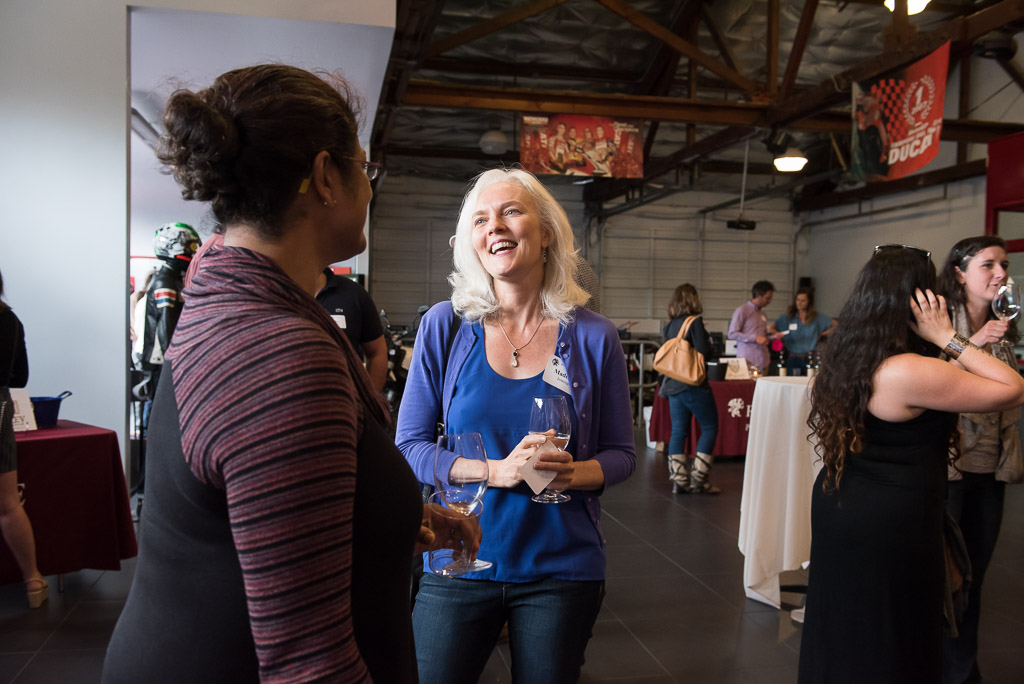

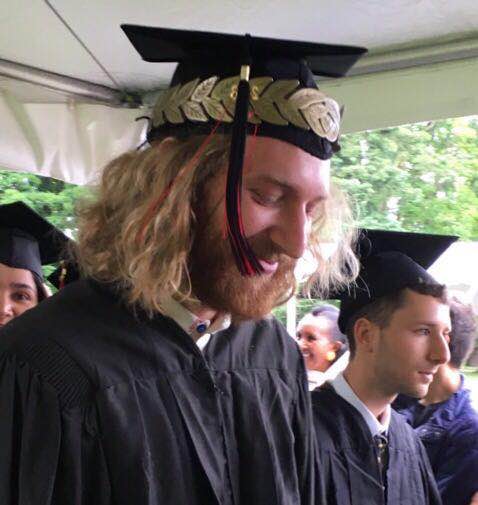

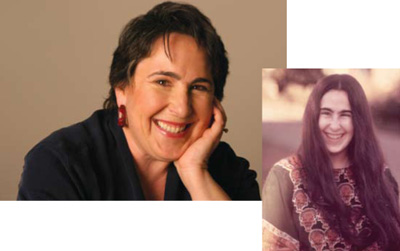
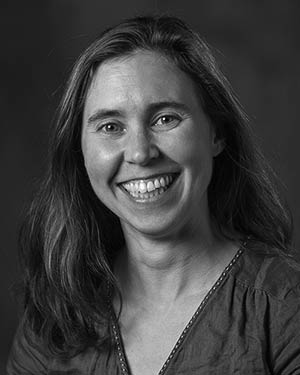

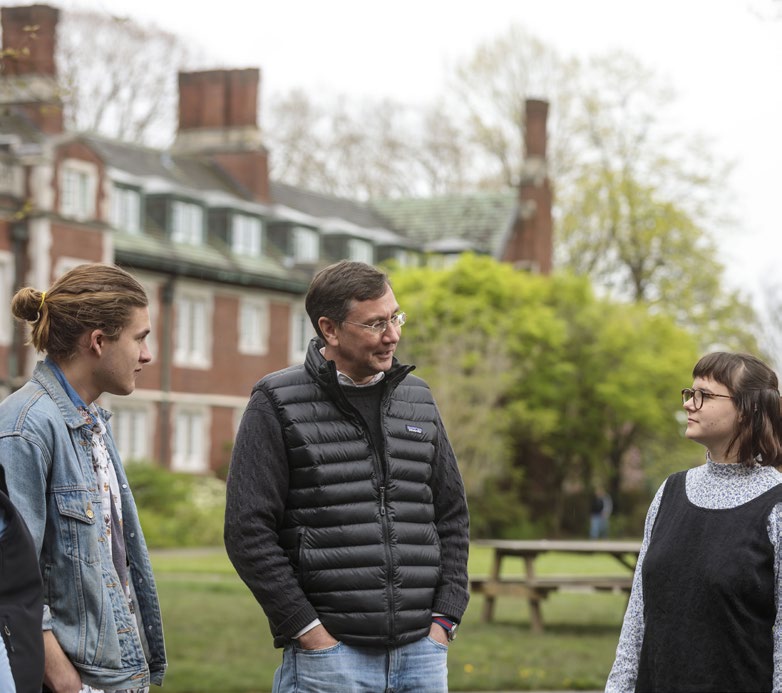
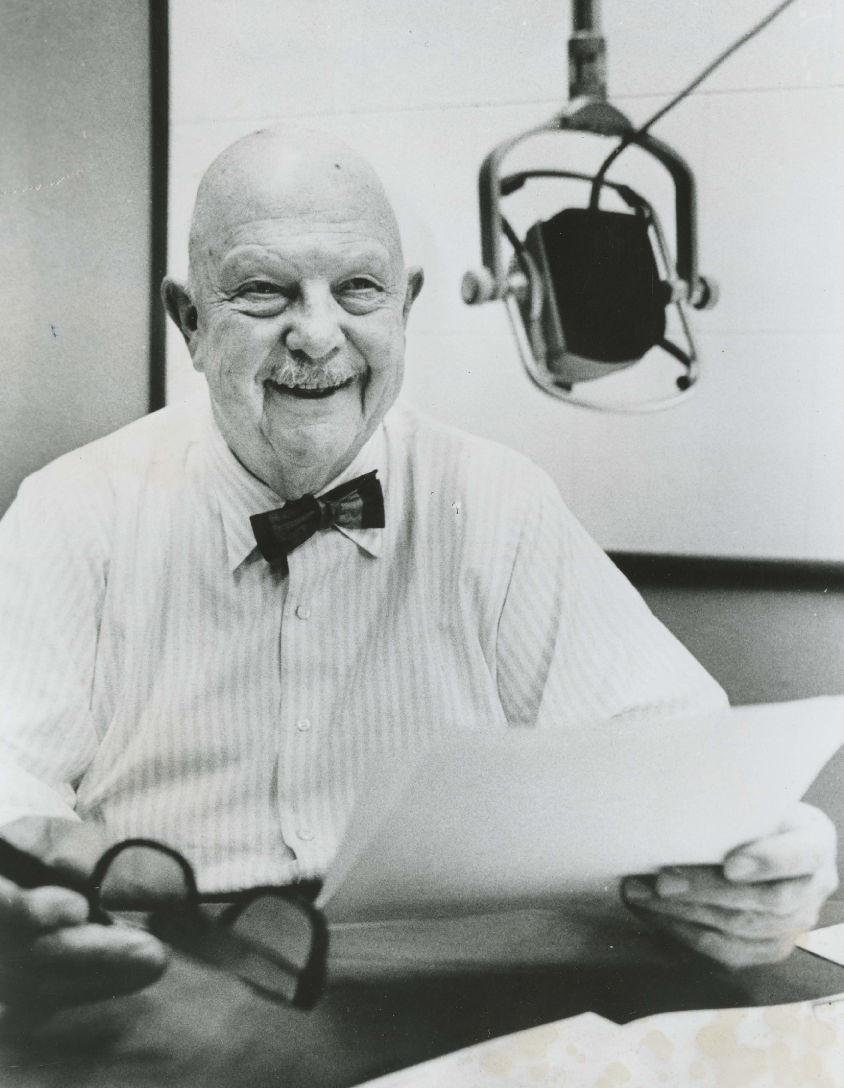
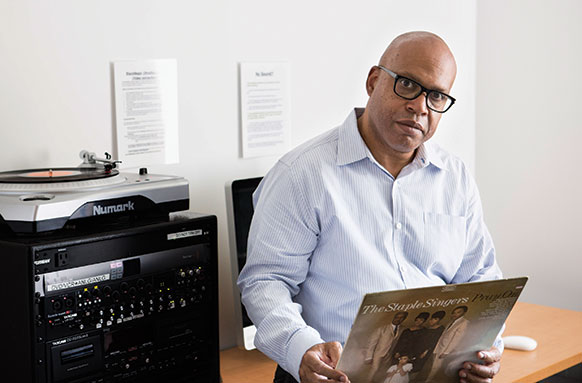


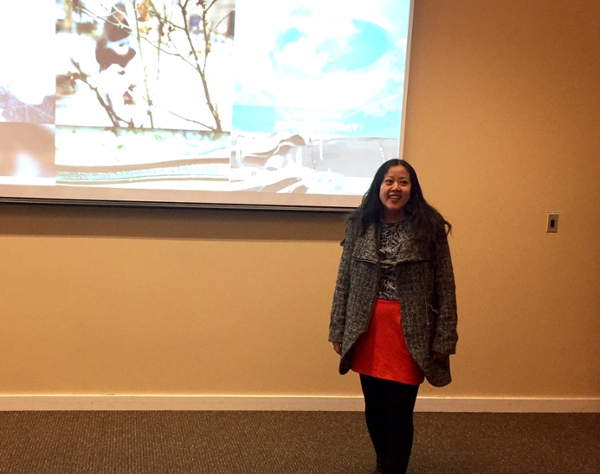

LATEST COMMENTS
steve-jobs-1976 I knew Steve Jobs when he was on the second floor of Quincy. (Fall...
Utnapishtim - 2 weeks ago
Prof. Mason Drukman [political science 1964–70] This is gold, pure gold. God bless, Prof. Drukman.
puredog - 1 month ago
virginia-davis-1965 Such a good friend & compatriot in the day of Satyricon...
czarchasm - 4 months ago
John Peara Baba 1990 John died of a broken heart from losing his mom and then his...
kodachrome - 7 months ago
Carol Sawyer 1962 Who wrote this obit? I'm writing something about Carol Sawyer...
MsLaurie Pepper - 8 months ago
William W. Wissman MAT 1969 ...and THREE sisters. Sabra, the oldest, Mary, the middle, and...
riclf - 10 months ago